| PICTURE FRAME MATERIALS
|
 |
| Picture frames are available in a wide variety of wood species, as well as other materials. In Victorian times and earlier, the most popular materials for framing were pine, poplar and basswood, but today the options are nearly inexhaustible.
Wood remains one of the most popular substrates, but before reviewing the different types available on the market, it is important to understand the distinction between hardwood and softwood.
Hardwood is the technical name given to any tree whose seeds have an outer casing, called "angiosperms". Most deciduous trees are hardwoods, and include species such as Cherry, Walnut, Ash, Basswood and Birch.
Softwood is the technical name for trees whose seeds do not have an outer casing - "conifers". Most evergreen trees are softwoods, including Fir, Cedar, Pine and Spruce.
This official designation does not actually define the strength or density of the wood itself. In fact, there are soft hardwoods (Maple, Birch), and hard softwoods (Fir).
The lengthy list below does not cover every picture framing material available, but identifies many of the substrates used in picture framing today.
|
ALUMINIUM
Aluminium is a type of metal commonly used to create picture frames. Aluminium frames are often less expensive than wood frames, and the face of the frame is generally flat or curved, without any ornate decoration. This is due to their manufacture, which consists of dragging strips of aluminum through a die (mould) cut in the shape of the frame's profile. This ensures the frame length is completely uniform. Aluminium frames are strong and sturdy; a thin frame can support quite a large image, despite the added weight of the glass and backing.
|
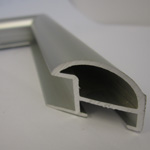
|
ASH
A member of the Olive family, Ash can be found across Europe, Asia and North America. Considered a Dense Hardwood, Ash is very strong and hardy, but has attractive elastic qualities as well. White Ash and Black Ash differ in appearance, with White Ash being lighter in color with a looser grain, while Black Ash has a tighter grain and darker coloring.
|
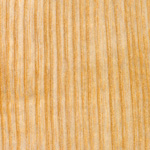
|
BARNWOOD
Reclaimed wood from barns and other old buildings is often used to create rustic, natural frames. Barnwood may be from a variety of tree species, including oak, chestnut and pine. The wood is generally faded in color to a gray or washed-out brown (though vestiges of the old paint may remain as well), and feels soft and smooth due to years of weathering. Often, frames made from Barnwood retain their knots and nail holes, and even feature rust-colored nail details.
|
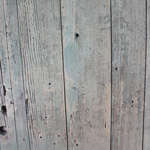
|
BASSWOOD
Found in Europe and North America, with many different types found in Asia, Basswood is from the Tilia family, and is also known as Linden. A very common wood used in picture frame mouldings, it is a soft hardwood that is easy to shape and carve. It has a fine, unobtrusive grain, and is quite lightweight. In the past, it was used in wood sculpting and puppet-making.
|
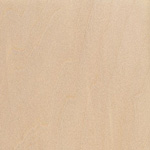
|
CEDAR
Cedar is considered a soft softwood, and is native to the Himalayas and Mediterranean region. Cedar wood is known to repel moths, which can be helpful in protecting artwork. There are many different subspecies of Cedar, including Red, White, Spanish, and Atlantic. These different types are grown in different parts of the world, and all have different grain patterns and colors ranging from a pale, pinkish-white to rich brown-red.
|
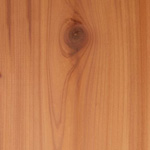
|
CHERRY
Cherry is a dense hardwood that is only one of many subspecies of the genus Prunus, which includes plum, apricot, and almond. The wood is generally straight grained and easily worked, as well as durable and decay-resistant. It begins as a light tan color and darkens to a deeper brown over time. Staining with varnish can sometimes cause unwanted blotches.
|
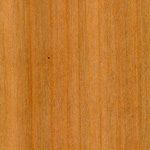
|
HEMLOCK
Hemlock is a light brown wood with a primarily straight grain that occasionally features spirals. Often used as timber to build houses, Eastern and Western Hemlock trees are found in great quantity in North America. The wood holds paint and glue well, perhaps due to the lack of resin canals in the grain. It also stays together well when nailed. Hemlock is a popular wood for picture framing.
|
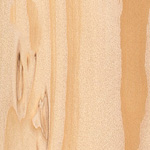
|
MAHOGANY
Well known for its red tint, Mahogany is a hardwood whose color is often mimicked with other, less expensive woods and faux finishes. With its straight grain and relative durability, it is a popular wood for furniture building as well as picture frames. Some subspecies have a quality called chatoyancy, which is evidenced in its ability to create a glossy, luminous sheen when polished.
|
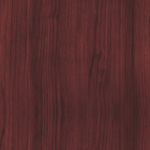
|
MDF
Medium density fiberboard (more commonly known as MDF) is constructed from residual wood pulp fibers, which are pressed with great force to form a wood-like board that is known for its strength and density. MDF frames are often less expensive than real wood frames, because the materials used to create them are the recycled pieces of the real wood. Though initially identifying the "medium" density, where firmer and softer densities were also available, today MDF refers generally to any fiber board.
|
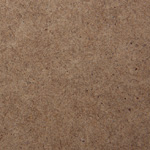
|
MICA
In regards to picture frames, Mica actually refers to a substitute for the mineral mica, which was developed to replace the real thing in the early 20th century. Today this plastic laminate is used for flooring, countertops, and to coat mdf or wood picture frames. Mica is easy to wipe clean, heat resistant, and creates an attractive, glossy finish that many customers seek when buying a frame.
|
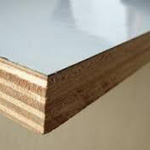
|
OAK
Oak is classified as a dense hardwood, though both desciduous and evergreen varieties exist. Extremely hard and durable, oak has long been used in building ships, buildings and barrels. The coarse grain is considered quite attractive, and absorbs stains and other finishes easily. The wood is resistant to decay, which is a good quality in archival picture framing.
|
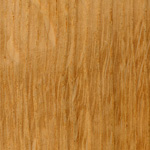
|
OBECHE
An African tropical tree, Obeche is a soft hardwood that is commonly used in making guitars, but has become quite popular for picture frame mouldings. Slightly yellow in color, Obeche has an interlocking, medium-coarse grain and is quite easy to carve and stain. Considering it is generally imported (as plywood or veneer most commonly), it is a relatively inexpensive wood.
|
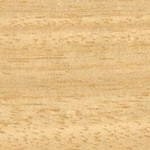
|
PINE
Pine is recognizable by its light, yellowish color. It is a softwood with an even, straight grain, that is easily worked both by hand and by machine. Due to its resinous nature, it may resist paint application, and has a distinct scent during manufacture. Most subspecies of Pine are affordable and popular in picture framing and other woodworking projects.
|
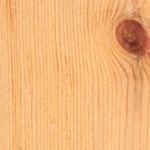
|
POPLAR
Poplar resides in the same family Aspen and Cottonwood, and is classified as a soft hardwood. In fact one of the softest hardwoods, it can cause problems when working by leaving a fuzzy texture behind on the edges after sanding or other light working. Poplar has a light cream or yellow color, and a relatively uniform grain. It is generally quite inexpensive.
|
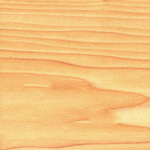
|
RAMIN
Ramin is a soft hardwood with a faint, straight grain. Generally, ramin is yellowish or almost white in color, sometimes with a gray tint. Though it is relatively easy to work with, this wood does have a tendency to splinter. Because of its lack of detail, it is a popular wood for picture framing. However, over-distribution has made less available.
|
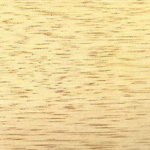
|
STYROFOAM (POLYSTYRENE)
Styrofoam is a brand name for a synthetic polymer compound called polystyrene. Frames made from this "foamed" plastic (which is much denser and stronger than the white material used for coffee cups and packaging) are less expensive than wood frames, and generally lighter. Once shaped, they can be coated in a laminate to look exactly like wood, and relief designs and ornamentation can be added to the foam prior to coating. Styrofoam frames are a bit weaker than wood frames, because the joints must be glued together rather than nailed.
|
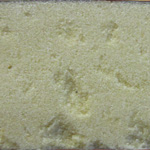
|
TEAK
Teak is a dense hardwood that is known for its ability to withstand the elements, and for the beautiful furniture that is often made from it. Highly durable and water resistant, Teak is generally golden or dark brown in color with a coarse texture. The wood is easily workable in all areas, though silica in the body of the tree has been known to dull blades. Considered the best wood for rot resistance, Teak is a good choice for archival picture framing.
|
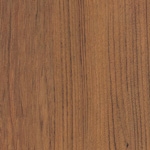
|
WALNUT
Walnut varies in color from a pale brown to a rich chocolate brown. It is a dense hardwood whose grain can be irregular or straight. When straight-grained, the wood is easy to work with; irregular grain can sometimes result in pieces of the wood chipping out while cutting. Walnut can be an expensive wood, and is most often seen as a veneer on furniture and picture frames.
|
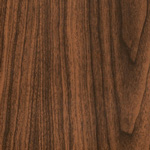
|
| There are many different materials used to make picture frames. Many of the wood types listed above will be applied simply as a veneer: a thin layer of wood which is pressed onto a less expensive substrate (like polystyrene or MDF) to give the appearance of the more costly one. In many cases, veneers are the best way to achieve an expensive-looking grain, since the bulk of the frame is likely made from a sturdier material more suited to its task.
Regardless of the material from which it is made, a high-quality picture frame is a good investment and will stand the test of time, protecting and drawing attention to your artwork for years to come.
|
|

|



|
USA Giclee On Canvas, Fine Art Printing - Art Scanning & Reproductions - Handmade Oil Paintings - Custom Wood Panels, Metal Picture Framing - Block/Plaque Mountings, Large Format Dry Mounting & Lamination - Art Supplies: Stretcher Bars, Cradled Wood Panels and Artist Canvas - Collages On Canvas - Plexi/Acrylic Face Mounts - Block Acrylics, Fabric Printing, Dye Sublimation - Cityscape Skyline Prints, Resin, Photo Gifts and more...
Frame Assembly Guide - Dovetail System
USA Laser Engraving & Cutting Services
|
|
© 2002-2024 - KeenART Media Ltd.
|
|
| |
|
